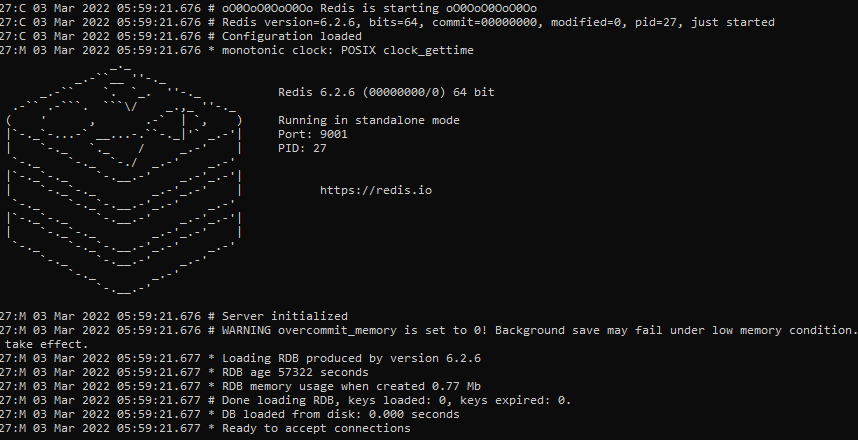Redis uses a set of commands for managing and working with the databases. One useful command is the PING command. Let us illustrate how we can use the Redis PING command.
Install Redis on Linux
Before working with the Redis command, you must ensure a Redis server is installed on your system.
Open the terminal and update the system as indicated below:
$ sudo apt-get upgrade
Next, enter the commands below to download and install the Redis server:
$ tar xvzf redis-stable.tar.gz
$ cd redis-stable
$ make
Before running the previous command, ensure you have the GCC compiler and libc installed.
Once Redis server is installed, open the terminal and run the following command to start the server:
The command indicated above should start the Redis server with the output as shown below:
Test If Redis Is Running
Before running any commands or connecting any clients to the Redis server, you must ensure that Redis is running. Luckily, the PING command allows us to test if the server is running.
The PING command returns PONG if the server is up and running. An example of using the PING command in Redis is provided below:
PONG
Running the redis-cli command followed by a command will execute the specified command to the Redis server. By default, the redis-cli command will attempt to connect to the Redis server on port 6379.
You can also open the redis-cli interface and run the following PING command as shown:
127.0.0.1:6379> ping
PONG
Note: the PING command also supports string arguments. An example is as shown below:
"Hi"
Conclusion
This short article provides the importance of Redis commands to work and manage databases. It also guides you on testing and verifying if the Redis server is running using the PING command. We hope you found this article helpful. Check out other Linux Hint articles for more tips and information.

